

| Previous Flies |
| Fly Tying Terms |
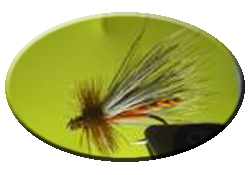
FURLED EXTENDED BODY OCTOBER CADDIS – [F.E.B October Caddis]
This fly was the result of some R & D last summer in preparation for the Idaho Fish-In on the Selway and Lochsa Rivers, both of which produce a good October Caddis hatch in mid to late September. After reading quite a bit of literature about the October Caddis, a hatch I have never fished, and after studying umpteen patterns and their recipes, and experimenting a bit at the tying desk I came up with this furled extended body October Caddis.
I was not able to attend the Idaho Fish-In but my way of participating was to send a half dozen of these flies to Ron Eagle Elk who was attending. Ron fished them on the Selway under bright sunny skies at mid-day at the tail out of a large pool with no fish in sight. Three casts, three rising cutts, three short strikes. Ron rebuilt the flies on a longer shank hook and went out the next day to the same place under the same conditions. Four casts, four rising cutts, and four takes with all four fish landed. He continued to test the pattern with good results.
Since last summer, I sized up from the original size 12 standard dry fly hook to a size 10. Some folks might want to go to a size 8 if the short strike / hook up question is of a concern to them. (I still think that Ron got so excited the first time out that he just flat out pulled the fly away from the fish before they could eat it.)
Materials
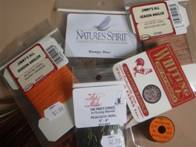
Method
Wrap a thread base to above the bend and then back to mid-shank of hook.
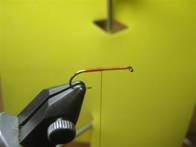
Furl one strand of antron yarn. For color variation, consider using a strand of one color and half a strand of a different color, e.g. burnt orange and medium brown. Electrician’s clips make great furling tools. Twist the electrician’s clips in opposite directions five or six turns. When the antron wants to furl, hold both clips in one hand and pull on the center of the twisted antron releasing the tension on it at the same time.
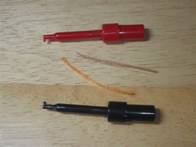
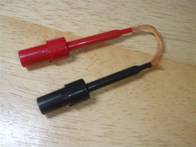
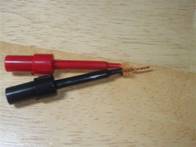
Remove the F.E.B. from the clips and twist in the direction it furled. Tie in the furled antron extended body at mid-shank with the f.e.b. extending to just past the bend. I like to take several wraps over the F.E.B. forward of the tie in point, then a couple wraps in front of the F.E.B. and then a few more back toward the tie in point to make sure it is secured to the shank. Trim the tag ends of the F.E.B.
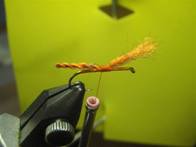
Tie in the deer hair wing. Cut, comb, stack and trim the deer hair so it extends past the F.E.B. When tying it in, wrap through the trimmed butts a good number of times to secure it and make for a very durable fly. A little head cement at this point will add to the durability of the wing.
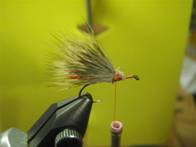
Tie in the dry fly hackle. Tie in several strands of peacock herl.
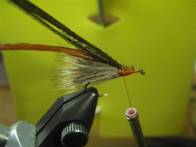
Wrap the herl forward to just behind the eye. To strengthen the herl, I like to use either use a dubbing loop or twist the herl around the tying thread before wrapping it forward. Tie off the herl and trim the excess.
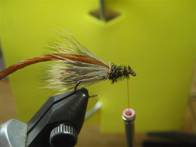
Wrap the hackle forward to just behind the eye. Tie it off, trim it, and finish with a couple half hitches or whip finish. A moderate amount of head cement to finish the fly is optional.


Fly of the week Archives
For more great flies, check out: Beginning Fly Tying, Intermediate Fly Tying and Advanced Fly Tying.
[ HOME ]
[ Search ] [ Contact FAOL ] [ Media Kit ]